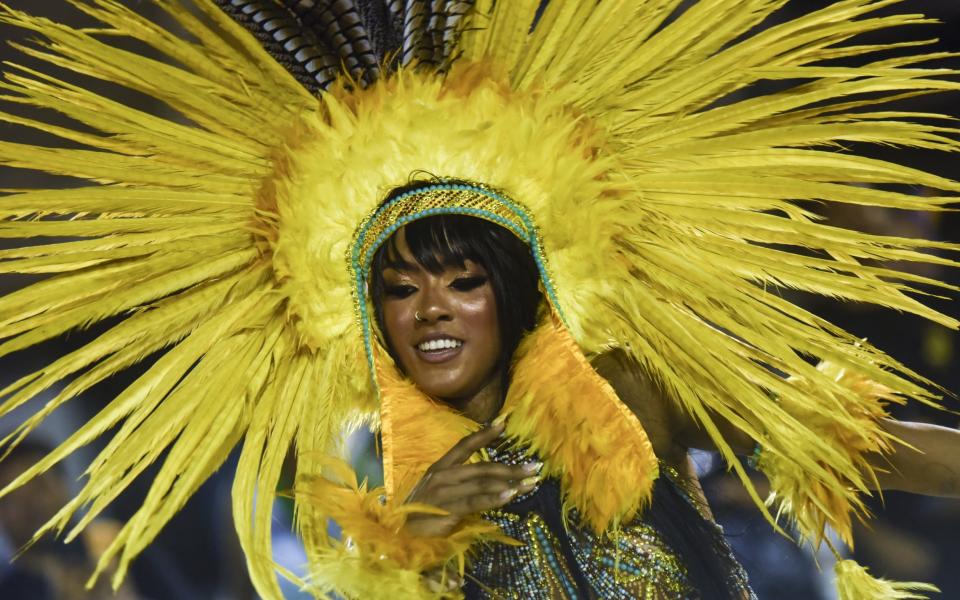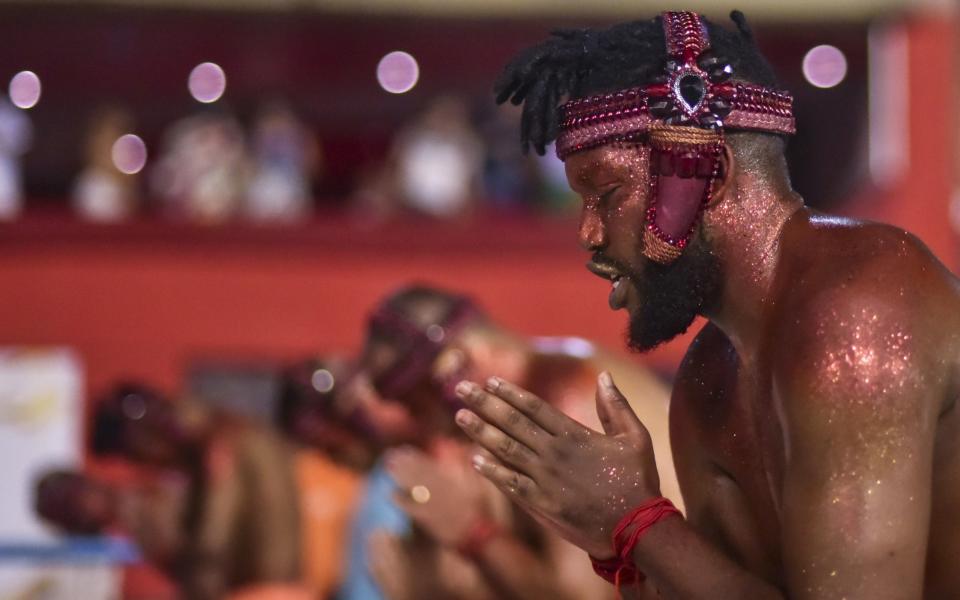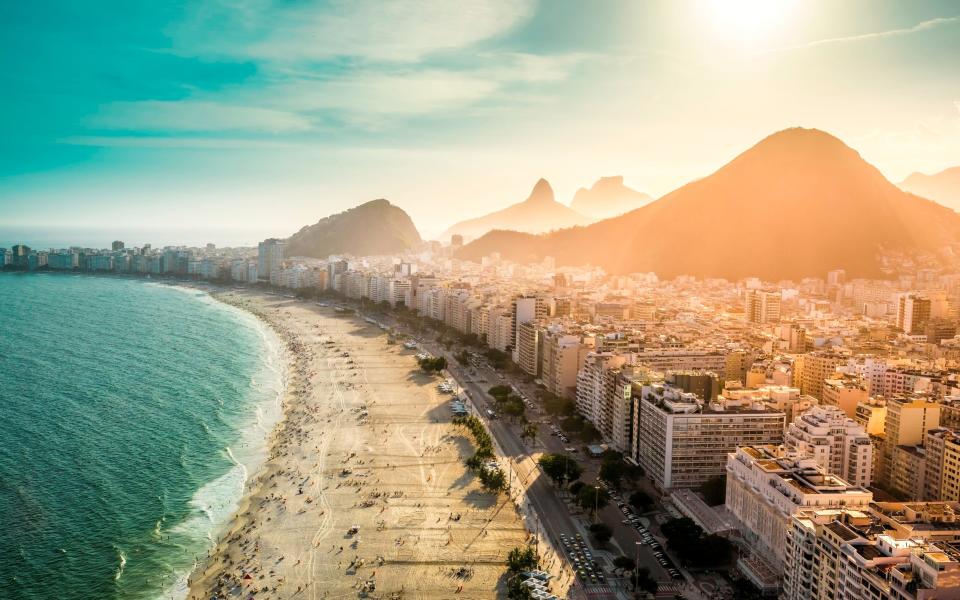Lent begins on Valentine’s Day this year, but Rio de Janeiro isn’t about to let a little religious observation get in the way of the world’s biggest party. Before the fast comes the festivities – eight days of music and dance to the frenetic beat of samba drums, with the city’s famous schools competing for prizes, and sequins, lace and feathers competing with bare skin. Carnival might mean “Flesh, bye!” but no one is in a hurry to cover it up.
What exactly is Carnival?
Carnaval – the Portuguese Carnival – is revelry and general revelry before the start of Lent, a 40-day period of fasting and penance in preparation for Easter.
As the date of the latter changes according to the lunar calendar, Carnival is a movable feast – this year’s Rio Carnival falls between 9-17 February.
Why is Carnival Rio the biggest?
The city began its love affair with Carnival in 1723, when Portuguese immigrants from the Azores, Madeira and Cabo Verde introduced the Entrudo, a Shrovetide parade. Salvador was the capital of Brazil at the time but Rio (which would become the capital in 1763) was a major port city.
The Rio Carnival really took off from the 1920s, when samba schools were founded, and neighborhoods began to compete in their costumes and choreography. There are more than 70 samba schools, including 12 “elite” schools with between 2,500 and 3,500 dancers and performers.
All-day TV coverage means Brazilians from all over the country can tune in and follow the action. The event now has a Twitter handle @RioCarnaval although the low number of followers (19.6K) shows that virtual samba dancing is a minority activity.
How long does it last?
From midday on the Friday before Ash Wednesday to the following Saturday – so, boringly, the Rio Carnival interrupts Lent. This is because, although the main official events take place over the four days of February 9-12, there will be a Parade of Winners on Saturday 17 February.


Where does it all happen?
The first official Rio Carnival parade took place in 1935 at a square in the center of the city called Praça Onze, and it remained at that location for 30 years until it was moved to the Avenida Presidente Vargas. In 1983, the famous architect Oscar Niemeyer – best known for creating the futuristic center of Brasilia – was commissioned to design a parade stadium. The purpose-built Sambadrome is located on Marquês de Sapucaí, an avenue that runs at right angles to Avenida P. Vargas.
The processions take place at night, so the Sambadrome opens around 5pm, with performances from 10pm until 4am or even 6am the next morning.
While ticketed spectators watch the parade of samba schools, many more Rio locals – known as cariocas – and tourists participate in street parties and fringe events around the city. These range from formal balls and masquerades to riotous open-air dance parties with music played by street bands known as “blocos”. The oldest street band, Cordão de Bola Preta, founded in 1918, was founded to play on Copacabana beach but is now based on the Avenida Rio Branco in the center; more than a million people show up to these gigs.


How many people take part in the Rio Carnival?
The Sambadrome can accommodate more than 80,000 seated spectators and 5,000 performers at any given time; at least 30,000 dancers and musicians are involved in total.
Around two million people attend events each day and between six and seven million over the four day period.
Which samba school is best?
A panel of 40 judges studies the movements, costumes, singing and quality and technique of the dancers. The schools are divided into league tables.
Imperatriz Leopoldinense – whose performance focused on a bandit leader and folk hero from the north-east won the elite prize in 2023, 22 years after its last title. The Grande Rio school – which highlighted prejudice against Afro-Brazilian religions – won the elite prize in 2022. The 2021 event was canceled for the first time in a century, due to the pandemic. Viradouro won in 2020 and came second last year.
Mangueira (2019 and 2016 winner) and Salgueiro (2009 winner but regularly in the top positions) are two of the most famous and successful samba schools. The schools prepare from October (and sometimes the whole year) and visitors are welcome to attend rehearsals.


Do the wonderful dances have a message or story to tell?
Samba schools – many of which have deep ties to the favelas or slums – have long used their shows to celebrate diversity, protest political regimes and highlight injustices social. Read more about the history of samba schools here.
Does everyone have to dance the samba?
At informal street parties, anything goes, but samba is important as a community dance in Rio. The modern Carnival only took on its vibrant colors and dynamic dance styles because Brazilians of African descent were allowed to participate. Slavery was banned in Brazil in 1888 and it is no accident that the following year saw the first blocos (street parties).


How much is it and can I still get tickets?
Grandstand tickets are still available, from US$14 (£11) for Friday and Saturday and from US$214 (£169) for Sunday and Monday – when the Special or Elite schools group will be performing. The Grandstand includes concrete steps or bleachers. Prices for allocated seats and boxes are higher, with a covered box costing $1,194 (£945) for Sunday and a Super Folia VIP seat (with champagne) costing $1,544 (£1,222) for the Champions Parade.
There are still some seats available in most categories every day. Prices are per person. For tickets, go to riocarnaval.org
Are the hotels completely full?
Most hotel rooms and flights into Rio are booked well in advance for Carnival, but Hotels.com is offering two nights (February 17-19) in a double room at the Orla Copacabana on £327, less breakfast (£7 extra each) . Lastminute.com has hotel-plus-flight packages for the Carnival period from £2,900 per person. It’s a little too late to organize a trip for this year, although nothing is impossible for those willing to pay the dollar.
If you are planning ahead for next year, Tour Latin America has a nine-day holiday during Carnival for £3,400 per person, including Sambadrome seats but excluding flights.
See our guide to the best hotels in Rio.


Is Carnival safe?
Brazil has high levels of street crime, much of it low-level pickpocketing. People wear casual clothes and even beachwear and flip-flops for Carnival and it is wise not to wear expensive watches or carry flashy cameras or phones. Criminals target drunken rebels.
The FCDO advises: “You should be vigilant, especially before and during the festival and carnival period.” He also warns not to go on the Corcovado hiking trail up to the statue of Christ the Redeemer right now, as armed robberies have been reported.
What else is there to do?
Rio has excellent art galleries and museums, excellent restaurants and a thriving nightlife, as well as its famous beaches. To the east of the city are the resorts of Búzios and Cabo Frio and to the south and west is the Costa Verde, a 350-mile stretch of verdant hills, beautiful beaches, towns (including Paraty) and offshore islands ideal for driving holiday. .
Our Rio de Janeiro guide has tips on the best restaurants and bars in the city.
Where are other big Carnivals?
Within Brazil, the Carnivals of Salvador de Bahia, Recife, Olinda, São Paulo and the cities of Minas Gerais are considered masterpieces. Salvador’s, known as the Carnival of Bahia, consists of a trio of elétricos – bands with sound systems that travel on floats driving through the city. Like the city, the event has a strong African flavor, with dances ranging from samba to whatever else is in fashion in the region.
The Carnaval de Oruro in Bolivia, featuring a traditional dance called La Diablada, is one of the biggest fiestas in the Andean region; in 2008, it was inscribed on the Unesco Intangible Heritage list.
The carnivals of Gualeguaychú in Argentina and Montevideo, the capital of Uruguay, are important to the residents of those cities and attract small international crowds.
For more information see our guide to the perfect two week holiday in Brazil.